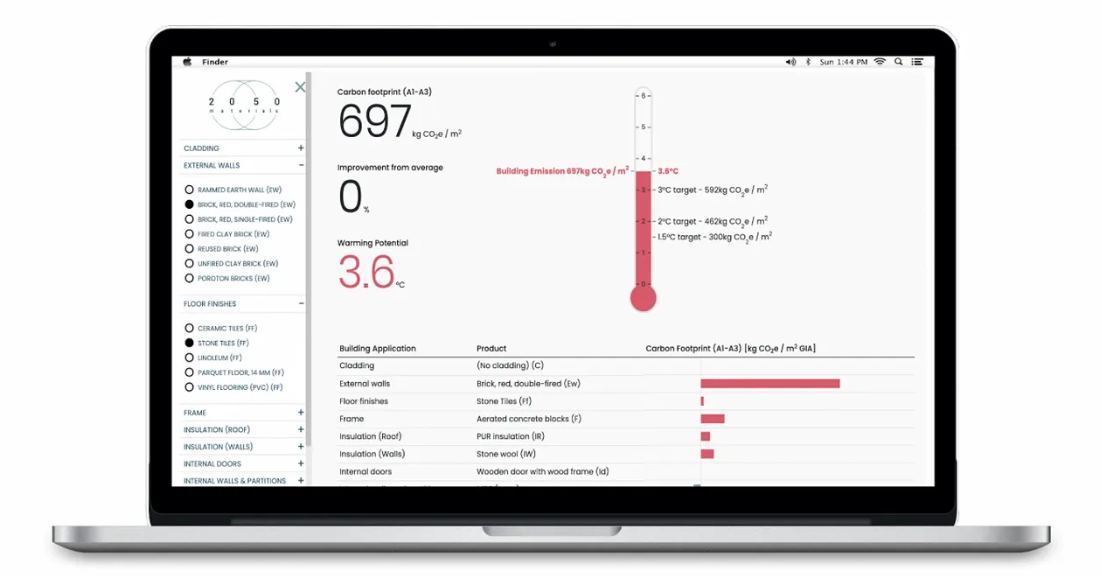Local sourcing: 5 key advantages of specifying local products

Global vs. Local sourcing
The discussion around global and local sourcing in the construction sector always calls for thought-provoking debates.
The answer to whether global is worse than local sourcing depends on which stakeholder you’re asking, and more importantly, which parameter is the primary factor of the analysis.
In an ideal world, construction products would be sourced from anywhere in the world without any limiting or environmental consequences. In today’s world, however, local sourcing is fundamentally crucial. It does not only limit transportation emissions, but is also significantly advantageous from a societal perspective.
In this article we evaluate the 5 key benefits of specifying and procuring local products.
1. Lower costs, flexibility and higher revenue
Firstly, local sourcing minimizes the procurement process “hidden costs”. By focusing on local manufacturers, custom clearance is no longer in the equation. This is typically a time-consuming, resource-heavy and costly step for buyers.
Also, lead times, risk of damaged products and increased logistics costs are reduced significantly due to shorter travel distances and decreased stock keeping requirements when compared to imported goods. On top of that, communication is improved as local suppliers are generally more responsive, enhancing supply-chain flexibility for any crucial last-minute changes.
Lastly, local sourcing does not only help cut down costs and improve quality, but can also help buyers boost their revenue levels and secure new customers. Such efforts of pursuing and structuring a fast-paced and efficient supply chain are likely to boost a company’s reputation and demonstrate commitment, which can lead to new partnerships and client channels.
2. Robust supply-chain management
The further away a buyer is from their supplier, the less control they have over them. Sourcing from local suppliers enables site visits and face to face meetings, lessening the risk of details being ‘lost in translation’ and ensuring quality requirements and key deadlines are met.
At the same time, developing relationships with local vendors enhances integrity in the wider procurement process. This addresses the growing client demands for supply-chain transparency, ethical sourcing and compliance.
3. Positive community impact
Procuring goods and products locally also leads to financial injections and higher revenue for manufacturers in the particular region, leading to increased employment levels and new jobs. Any additional revenue is subsequently spent in the local economy, and the 3 key beneficiaries are:
- New and existing employees, in the form of new jobs or more competitive salaries
- The companies, in the form of R&D investments and expansion
- The local government, in the form of tax revenues
Besides, if local suppliers source their raw materials on other inputs from suppliers within their region, it can generate significant “multiplier” effects. Thus, focusing on local sourcing can improve working and living conditions in your region or country, paving the way for sustainable growth and development.
4. Reduced currency volatility risk
Placing orders from countries with volatile currencies can pose substantial risks on the successful delivery of your project. These can either be direct financial risks and budgetary implications due to increased costs, but also indirect, such as programme delays caused by trade wars or foreign instability.
 Through local sourcing, however, financial and trade risks are minimized, establishing confidence and effective procedures in the construction sector, where long-term contracts and lengthy procurement cycles are the norm.
Through local sourcing, however, financial and trade risks are minimized, establishing confidence and effective procedures in the construction sector, where long-term contracts and lengthy procurement cycles are the norm.
5. Reduction in carbon miles
When you think of sustainable products, does extraction location, manufacturing facility and logistics methodology come to mind?
Quite often, the emissions related to transportation get forgotten when comparing building products. For example, when CLT components travel from Nordic countries to the UK, about half of the timber benefits or negative emissions get used up during the transportation. If the products get sourced from further away, the product ends up creating more emissions than it takes up.
The diagram below illustrates the impact transportation has on the embodied carbon of a CLT product:

Extracting, manufacturing, transporting and storing materials requires a significant amount of energy and fuel. Even though it’s almost impossible to minimize energy usage entirely, the carbon footprint or embodied carbon of each product can be reduced significantly by shifting procurement efforts to focus on local manufacturers and suppliers. Products made of materials that are produced locally spend way less time in transit, thus consuming way less energy.
You probably already worked out that by reducing the demand for energy, so does fossil fuel usage and emissions. By engaging local supply-chains, buyers avoid these types of emissions within the totality of their operations, thereby boosting the sustainability performance of their business.
 Transport is one of the largest contributors to greenhouse gas emissions worldwide. Minimizing the need for it is vital to achieve the 2030 carbon targets.
Transport is one of the largest contributors to greenhouse gas emissions worldwide. Minimizing the need for it is vital to achieve the 2030 carbon targets.
2050 Materials can help you source locally
2050 Materials is building tools enabling specifiers and contractors to discover manufacturers in their region. We can help you make informed and accurate decisions to meet your decarbonization targets, by taking all relevant parameters into consideration.
If you’re designing or building for net-zero or any other climate target, reach out to us!

Related articles

Climate-Resilient Materials for the Built Environment: A Data-Centred Prime
As climate volatility intensifies, resilience metrics are fast becoming as critical as carbon data in material selection. This article outlines why adaptation is now a design imperative, how materials can be evaluated through a systems lens, and what KPIs project teams should demand. From self-healing concrete to fire-rated façades, we present a structured taxonomy of resilient materials, explain how to embed this intelligence into digital design workflows, and propose next steps for specification, benchmarking, and procurement.
Read more
The Most Interesting Low Carbon Products in Office Design
In this article and collection, we highlight 11 outstanding products that contribute to a lower carbon footprint in office design.
Read more
Top Low Carbon Building Boards: Performance, Benefits, and Use Cases
The building boards highlighted in this article and collection showcase low-carbon innovation in modern construction.
Read more